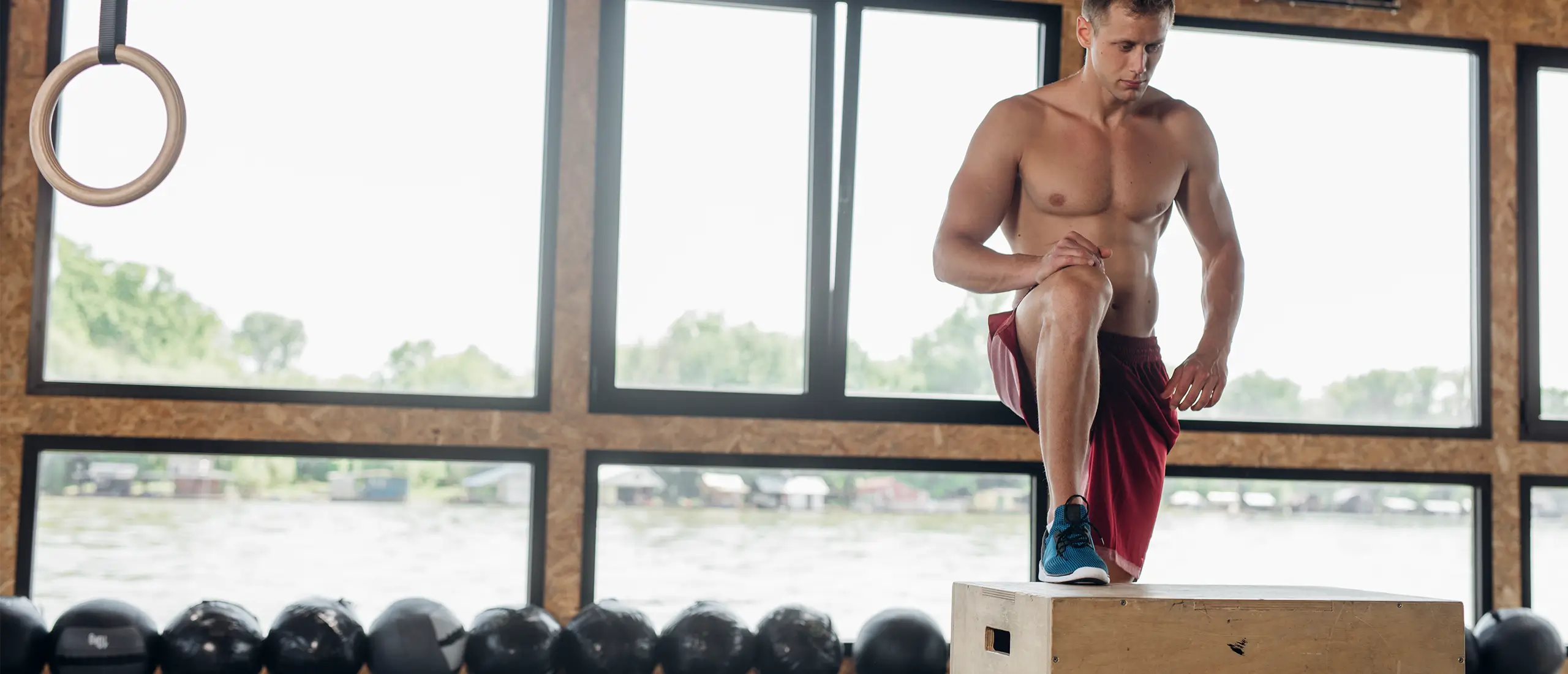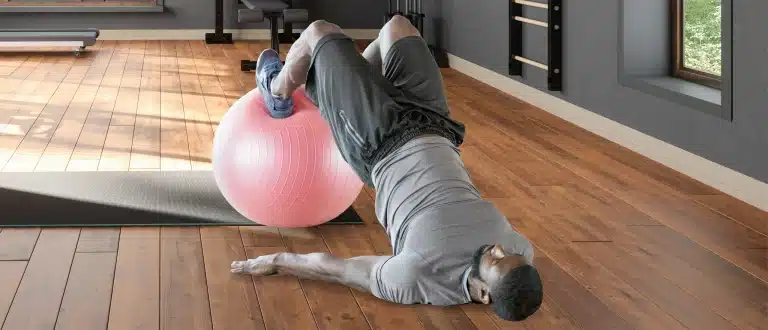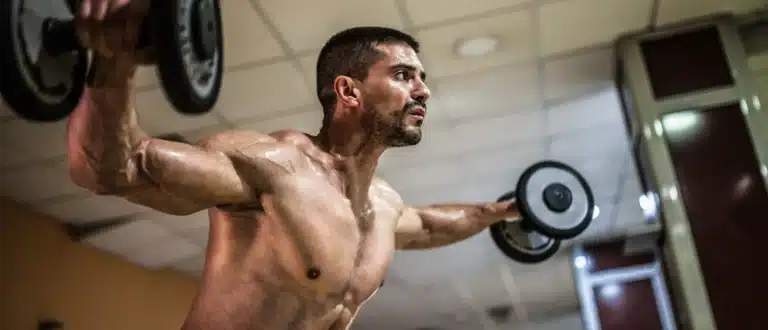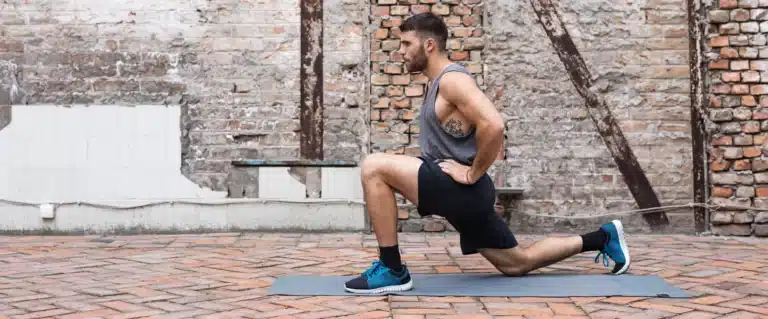
Step-Ups Are the Unsung Heroes of Longterm Knee Health
When it comes to functional lower body exercises, step-ups are one of your best options. Step-ups are a staple amongst runners and power athletes because they can help build strength and athleticism through a familiar range of motion.
But step-ups are suitable for anyone looking to increase knee health and stability, as well as build strength that’s highly transferrable to everyday activities.
Nike Master Trainer Joe Holder is all over step-ups. In his latest Instagram post, he shows three of his favorite step-up variations and exactly how to do them.
Below, we dig into how to perform a step-up, Holder’s go-to variations, and common mistakes to avoid.
What Are Step-Ups?
Step-ups are a basic lower body exercise you can do at the gym, at home, or even outside to target your quadriceps, hamstrings, and glutes.
If you have access to a sturdy step, box, bench, or chair, you have everything you need to do this exercise. If you’re new to step-ups, start by stepping onto a low surface, rather than a bench. You can work your way to higher surfaces as you get stronger.
Step-ups can also increase your heart rate, so they’re great for adding to warmups to increase blood flow, or circuit workouts to burn more calories. But this exercise requires balance, so focus on keeping your core stable, and completing slow and controlled steps. You can add speed once you get the hang of it if cardio is your goal.
Benefits of Step-Ups
If you’re interested in functional training, steps-ups are an essential unilateral exercise that will help you move better all day long. Here are five benefits of step-ups to consider.
Step-Ups Can Increase Leg Strength
Step-ups activate the big muscle groups of your lower body, including your quadriceps, hamstrings, glutes, and adductors. Because they get your body working on multiple levels, they challenge your lower body strength in ways traditional exercises like squats and lunges don’t. This unique range of motion translates to functional strength that can be applied when running, performing explosive sports, or climbing upstairs.
Step-Ups Can Even Out Muscle Imbalances
Since step-ups are a unilateral exercise—or an exercise that focuses on one leg at a time—they target both sides of your body equally. Unilateral exercises bring attention to muscle imbalances or weakness on each side of your body and can help to strengthen them.
Step-Ups Enhance Stability
Because step-ups require balancing on one leg and changing levels all at once, your core, lower back, and small muscles in your ankles and hips will fight to keep you stable as you step. If you’re a bit wobbly at first don’t worry, the more you practice step-ups, the more stability you’ll gain.
Step-Ups Can Strengthen Knees
For people who struggle with runner’s knee or recurring knee injuries, step-ups are a great exercise for strengthening the muscles around the knee. This strength can help support the knee, alleviating pain and pressure on the joint to keep you healthy and active.
Step-Ups Are Versatile
Step-ups can be done almost anywhere since all you need is a step. Once you have them down, you can remix them to match your goals. These variations include tempo, rep amount, weight amount, and whether you rack the weight at your sides, shoulders, or overhead.
If your goal is to build strength grab some dumbbells or a barbell. If you’re looking to enhance athleticism, add an explosive jump at the top. And if you want to build new neuromuscular pathways, try lateral step-ups or changing the height of the box.
How to Do Step-Ups With Proper Form
First, find a step, chair, box, or bench you can use to step up on. The surface should be hard, as this mimics the surface you’ll typically come in contact with when performing this movement pattern in everyday life.
Ideally, your knee should be bent at a 90-degree angle, and you should be able to comfortably step up without having to jut your hips back or rely on the leg still on the ground to power the move.
Once you have your step-up surface, here’s how to do it:
- To start, place your right foot on the elevated surface. Keep your foot flat and create tension by pressing your foot down.
- Before stepping up, make sure your torso and shin angles are aligned, with your knee behind the toe, and a slight forward lean in your torso.
- Push through your right heel to step up, bringing your left foot up to meet your right so you are standing on the surface.
- Return to the starting position by stepping down with your left foot, controlling as you lower. Control is not just important to minimize impact, but also to take advantage of the glute activation that happens during the lowering phase of this exercise.
Aim to complete three sets of 10 to 15 reps on each side.
3 Step-Up Variations to Try
Once you’ve got traditional step-ups down, Holder has three step-up variations to increase athleticism and functional strength.
Dumbbell Step-Up With Curl
Since step-ups are a lower body exercise, they’re perfect for loading up with weight. If you’re looking to build some muscle, try this variation that includes dumbbells, with a bicep curl at the top.
- Grab two dumbbells, letting them rest at your sides.
- Plant your whole foot on the box.
- Keep your shin and torso aligned, with a slight lean forward in the torso, core activated, and knee behind the toes of the top foot.
- Drive through your top foot, using the muscles of your top leg to push you up, ensuring not to bend or explode through the back leg to power the move.
- Squeeze your glutes at the top.
- Pause to perform a bicep curl, face palms forward to maintain a neutral grip, curl with control up to your shoulders, and control the contraction on the way down.
- Step down with control, and repeat.
Your weight for this exercise should be light since you’ll need to be able to curl the weight at the top. Aim to complete three sets of 10 to 12 reps on each side.
Step-Up With Foot Release
If your aim is to increase athleticism this variation will help increase force development by adding in an explosive step. “It’s important when you get more athletic to use the body in different ways,” Holder says, “it’s about how quickly you can apply force.” And this variation ticks that box.
- Plant your whole foot on the box.
- Keep your shin and torso aligned, with a slight lean forward in the torso, core activated, and knee behind the toes of the top foot.
- Lift your top foot off the box, then drive down with power into the box.
- Drive through your top foot, using your quads, hamstrings, and glutes to push you up, and not bending or exploding through the back leg to power the move.
- Squeeze your glutes at the top.
- Step down with control, and repeat.
Aim to complete three sets of 10 to 15 reps on each side.
Lateral Step-Up
Lateral step-ups are great for working the glute medius, and strengthening your muscles through the sagittal plane of motion (or side to side) rather than forward and back. Here’s how to do it.
- Grab two dumbbells and let them rest in between your legs, or rack a single dumbbell at your chest like you would with a goblet squat.
- Standing vertical to the box, plant your closest foot on the box.
- Just like a regular step up, keep your shin and torso aligned, with a slight lean forward in the torso, core activated, and knee behind the toes of the top foot.
- Drive through the top foot to step up onto the box, focusing on powering the move with the glutes, hamstrings, and quads of your top leg not powering the move with your grounded leg.
- Squeeze your glutes at the top.
- Step down with control, and repeat.
As for dumbbell weight? Go safe before heavy. You can always increase the weight later. Aim to complete three sets of 10 to 15 reps on each side.
Common Mistakes
To get the most from this exercise and lower your risk of injury, avoid these common errors.
Knees Passing Toes
Protect the knee of your front leg by keeping your knee behind your toes as you step up. Pushing the knee forward places more stress on the knee joint.
Knee Out of Alignment
The knee of your active leg should track with your ankle, avoid letting it collapse in or out.
Pushing With Lower Leg
Your lead leg should power the move, bringing up your back leg as dead weight. Avoid exploding or pushing up with your back leg or you’re cheating your front leg out of the work.
Rounding the Back
A slight forward lean is a natural and athletic way to approach this exercise. The lean should come from your trailing ankle rather than your back. Hold your back upright, and keep your chest up and core tight rather than rounding your back.













